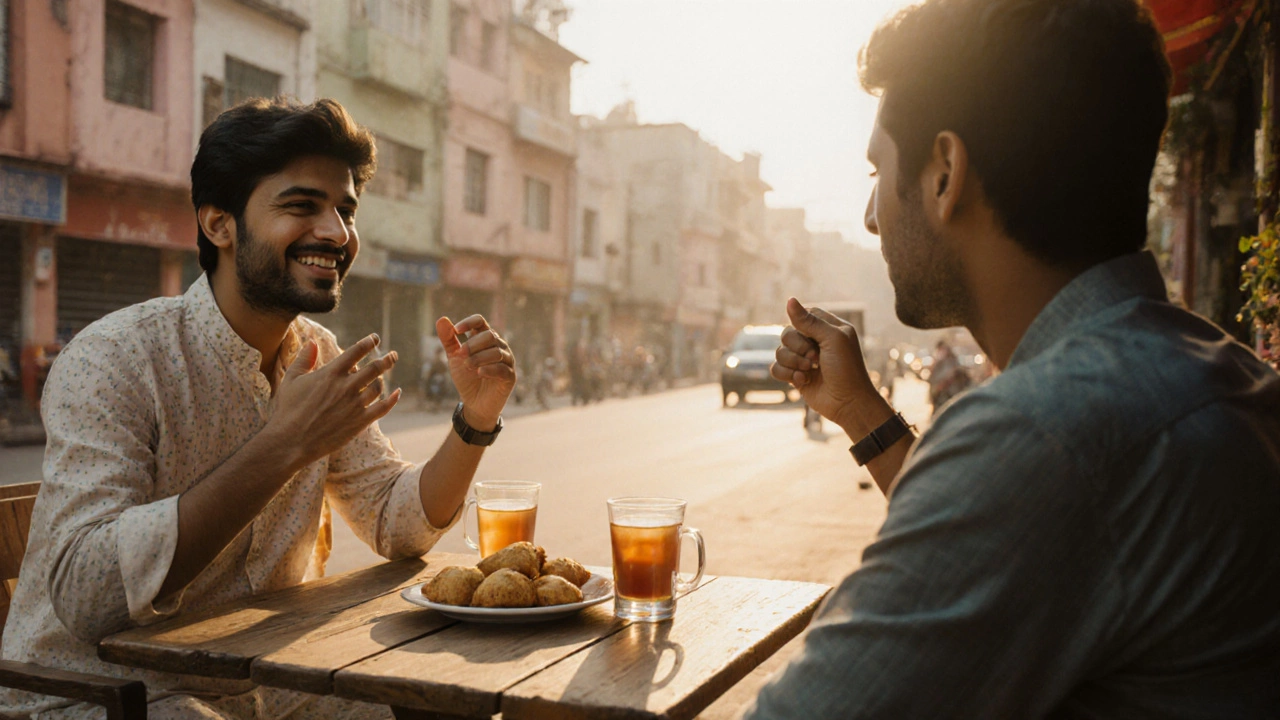Language & Culture in India: Words, Slang, and Tradition
When working with Language & Culture, the way people communicate and share customs across India. Also known as linguistic heritage, it shapes daily life and identity. It’s the glue that holds families, neighborhoods, and entire regions together. From the market chatter in Delhi to the lullabies of Kerala, every phrase carries a story. Language & Culture isn’t just about words; it’s about the values, jokes, and rituals that travel with them.
One vibrant thread in this tapestry is Indian slang, informal expressions used in everyday conversation across the subcontinent. Also called street lingo, it reflects youth energy, regional pride, and social dynamics. Think of “Theek Hai” when you want to say “okay” in a relaxed way, or “Sahi Hai” to show approval. These terms don’t just convey meaning; they signal belonging to a particular group or area. Understanding slang gives you a shortcut to the cultural vibe behind a simple “yes.”
India’s linguistic landscape is anything but flat. Regional dialects, local language variations spoken in specific states or communities, add flavor to every conversation. From the lilting Bhojpuri of the east to the sharp Konkani of the west coast, each dialect carries its own set of slang, idioms, and pronunciation quirks. When you hear a word like “Chal,” its tone and meaning can shift dramatically between Mumbai and Kolkata. Regional dialects therefore influence slang usage, making the same word feel fresh or familiar depending on where you are.
Pronouncing these words correctly is key to being understood and respected. Pronunciation guide, a set of tips that helps speakers produce sounds accurately, serves as the bridge between hearing a phrase and saying it right. Whether it’s the retroflex “ṭ” in “Theek” or the nasal “ṅ” in “Sahi,” small details change meaning. A solid guide lets you mimic native speakers, avoid awkward missteps, and show that you care about the local way of speaking. Mastery of pronunciation also boosts confidence when navigating diverse regions.
All of this happens within a broader cultural context, the social and historical background that gives meaning to language. Festivals, movies, and sports chants feed slang back into daily talk, while migration patterns spread regional dialects across cities. For example, Bollywood movies popularize phrases like “Bindaas” nationwide, turning a local term into a national catchphrase. Cultural context therefore shapes which slang sticks, how dialects evolve, and why pronunciation matters in different settings.
What you’ll find in this collection
Below you’ll discover practical articles that break down the most common Indian slang for “okay,” explain subtle regional differences, and provide step‑by‑step pronunciation tips. Each piece is designed to help you sound natural whether you’re chatting with friends in Delhi or ordering food in Chennai. The posts also link slang to the cultural moments that made them popular, so you’ll get both the language and the story behind it.
Ready to add authentic Indian expressions to your vocabulary? Dive into the articles below and start using slang that feels native, not forced. The insights here will sharpen your ear, improve your accent, and give you the confidence to join any conversation with ease.
Indian Slang for "Okay": Common Terms, Usage & Pronunciation Guide
Discover the most common Indian slang for "okay" like Theek Hai, Sahi Hai, and Chal, learn their meanings, pronunciation, regional nuances, and when to use them.
Read more